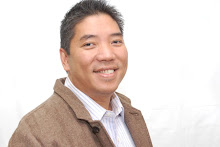By Ambeth Ocampo
Philippine Daily Inquirer
First Posted 01:18:00 09/17/2008
This Wednesday morning in Tarlac province there will be a simple commemoration of the 137th birthday of Francisco Makabulos (1871-1922), one of the little-known generals of the Philippine Revolution. His father was Alejandro Makabulos of Lubao, Pampanga, and his mother was Gregoria Soliman of Tondo, Manila. From the surnames alone, one can assume that his ancestors were of pre-Spanish warrior class, “maka-bulos” being Kapampangan for one who has set something or someone free.
Maybe a student can be made to look up the meanings of common Kapampangan surnames and see what they mean: Catacutan is self-explanatory, someone to be feared; Maka-pagal is someone who will wear you out, perhaps someone best described as tireless; then you have Maka-spak, someone who could break things.
That Makabulos’ mother was a Soliman from Tondo could mean he was a descendant of the once great ruler of Maynila, because members of the pre-Spanish nobility were allowed to keep their surnames like: Soliman, Lakandula, Gat-dula and Gat-bonton. From names alone a lot of clues to history can be found and all it takes is some effort to follow the leads.
Over the past few weeks I have been traveling around the country, learning local history and honoring heroes like Pantaleon Villegas. Better known as “Leon Kilat,” he was born in Bacong, Negros Oriental, but settled in Cebu province where he routed the enemy. He was assassinated in Carcar, Cebu, during Holy Week in 1898. There were also Maxilom of Cebu and the leaders of the Revolution in Panay, like Martin Delgado and Adriano Hernandez. Maybe there is truth to the rumor that what passes off for “ Philippine history” is actually the local history of Manila. Other regions, other places are looking at their own histories and finding their heroes who should join the bigger names like Aguinaldo, Bonifacio, or Luna. There is so much history to be found in the regions, but I have spent a lot of time in Manila contemplating the navel by going into the details of famous lives.
Two decades ago, I went through the papers of Antonio Luna. A great collection was recovered in an attic in New York that originally belonged to Grace Luna, wife of the prominent prewar architect Andres Luna who was the son of Juan Luna the painter and nephew of Antonio Luna, one of the generals in the Philippine-American War. While everyone was naturally attracted to the many paintings and sketches of Juan Luna, which are worth a lot of money, nobody seemed interested in the personal papers of Antonio Luna. So I went through an entire “balikbayan” box that contained everything, from personal correspondence and diaries to his notebooks when he was a student in Institut Pasteur in Paris complete with drawings of things he saw under the microscope.
I was overwhelmed by the manuscripts and a bloodied uniform, the same coat Luna was wearing when he was assassinated by Emilio Aguinaldo’s bodyguards in Cabanatuan in 1899. At the time, I did not know very much about Luna that was not in Vivencio Jose’s “Rise and Fall of Antonio Luna” (1971), so I visited the National Library where I found the inventory of his personal effects at the time of his death:
One leather traveling bag with toiletry case, one elastic sash, one alcohol lamp; curling irons, one packet boric acid, one packet rice powder, two small boxes shoe polish, one shoe brush, one soap dish, one pair spurs. (The curling irons were for his moustache, the rice powder to dull the shine on his face.)
A canvas traveling bag containing one pair charol half-boots, one pair hazelnut-colored leather buskins, one pair leather boots, one pair high canvas buskins; one astrolabe. One “baul” [chest] containing one black frock coat, one mirror “de tres lunas” [literally, of three moons], two white tunics, two white pants, one blue wool band, one Ilocano bedspread, two bath towels, one pair unused slippers, one empty leather portfolio, one metal box with coat buttons, 32 small boxes of cartridges, five cane fans, one general’s cap, one English straw hat, one Baliuag hat. (The empty leather portfolio could be just that or, as some would like to believe, it could have once contained the money of the Revolution that disappeared.)
One baul containing one thick raincoat, one pair “guignon” pants with sashes, three striped Cuban pants, five “calzoncillos” [underpants], five khaki pants, five short collars, two cotton shirts, two pillow cases, one big towel, three colored handkerchiefs, six books and shoulder pads. (It’s a pity that the book titles were not listed down or itemized; it would be enlightening what he was reading. It is also unfortunate that these items did not survive because we would not only know what he wore and what he looked like as a person, but his clothes would reveal his body measurements, which could help us know how tall he was, or what his body type was like.)
One box with six books, four canes, one saber, two American bayonets, one pair hazel-colored buskins, one Japanese bathrobe, two boxes with twenty handkerchiefs, six khaki “mambisas” (?), two khaki pants, one pair pantaloon “de montar,” one wool “americana” [suit], wool pants, eight white pants, seven white americanas, seventeen shirt collars, twelve shirts, five pillow cases, two “camisas de chino” [undershirts], two wool socks, and a “kalasiao” hat.
Trivial list or clues to Luna’s personality? That depends how the historian deals with the data.
* * *
Comments are welcome at aocampo@ateneo.edu.
Wednesday, September 17, 2008
Subscribe to:
Post Comments (Atom)

No comments:
Post a Comment